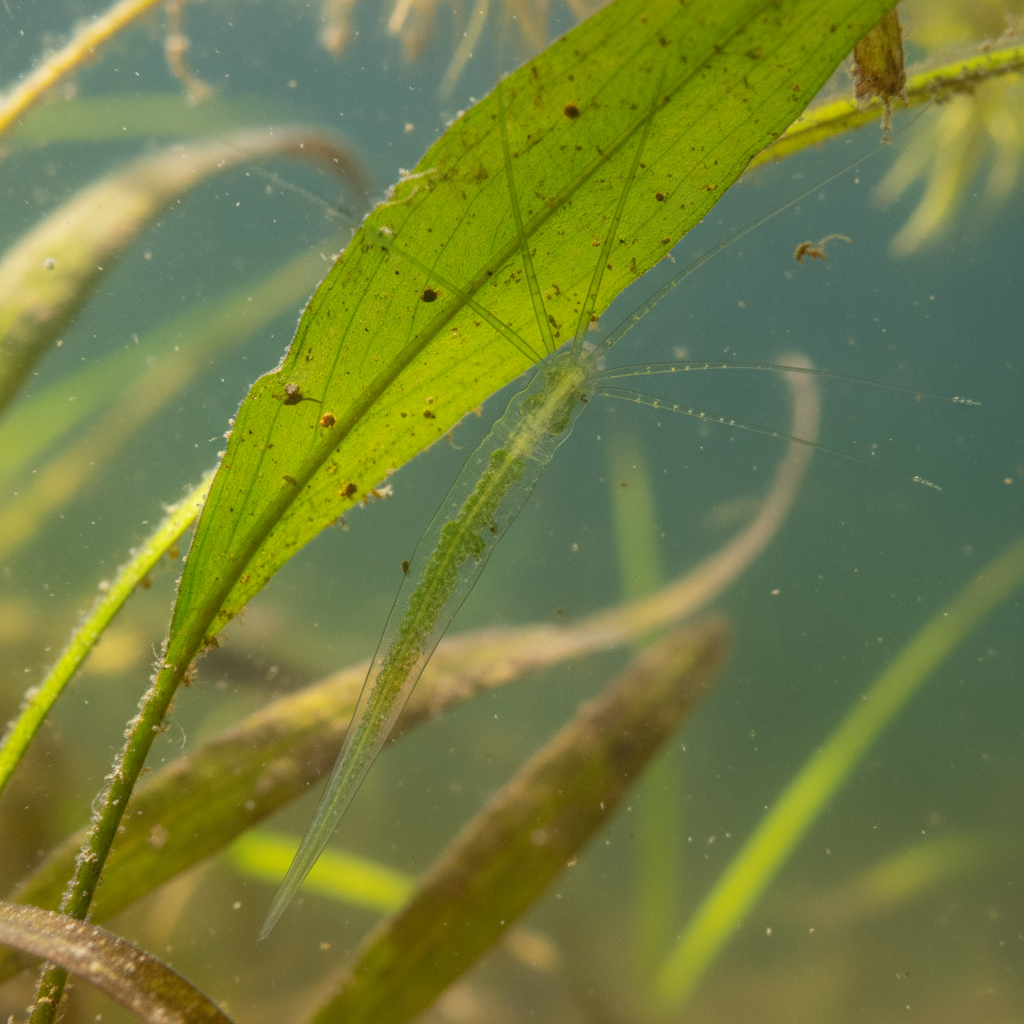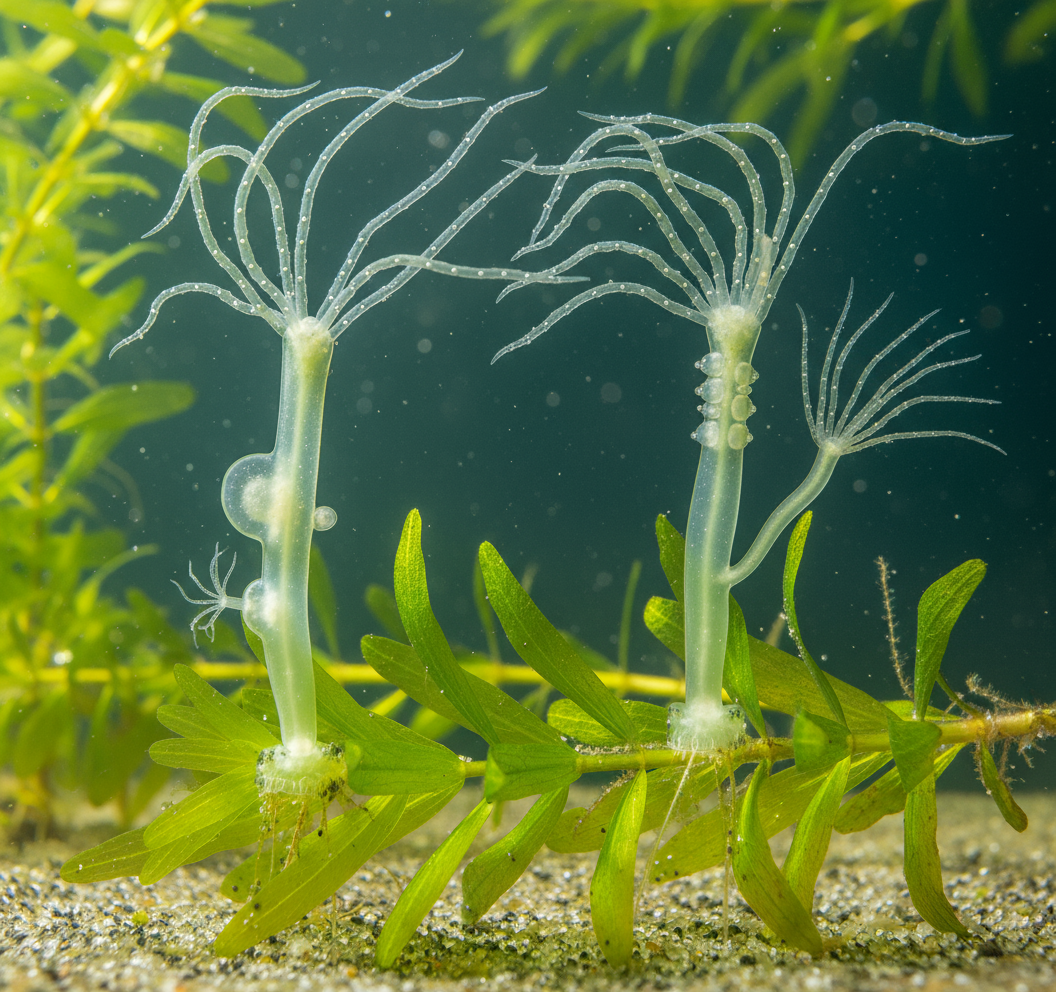Classification of Hydra
- Kingdom: Animalia
- Phylum: Cnidaria (aquatic animals with radial symmetry and specialized stinging cells)
- Class: Hydrozoa (mostly colonial with polyp and medusa stages, Hydra lacks medusa)
- Order: Anthomedusae (Anthothecata)
- Family: Hydridae
- Genus: Hydra
Hydra is a fascinating genus of tiny, freshwater animals within the Phylum Cnidaria and Class Hydrozoa. These creatures are notable for their simplicity, radial symmetry, and exceptional regenerative powers that make them the subject of extensive biological research. Native to temperate and tropical freshwater habitats worldwide, hydras contribute to aquatic ecosystems and offer insights into fundamental biological processes.

These classifications place hydras among relatives such as jellyfish, corals, and sea anemones, all characterized by their use of specialized stinging cells called cnidocytes.
Habit and Habitat
They inhabit freshwater environments worldwide, including ponds, lakes, slow-moving streams, and ditches. They prefer clean, unpolluted water with abundant aquatic vegetation where they attach to submerged substrates such as pondweed, stones, and debris.
Geographical Distribution
Cosmopolitan, but most common in India, Canada and U.S.A.

General Characteristics
- Cylindrical body is tube-like measuring approximately 1.3· cm in length.
- Anterior end contains mouth or hypostome, which is crowned with 6 to 10 filiform nematocyst bearing tentacles.
- Proximal end of the body contains pedal or basal disc or foot meant for attachment to the substratum.
- Body is diploblastic, consisting of outer ectoderm, inner intervening endoderm and mesogloea.
- Body wall encloses a gastrovascular extending into the tentacles. cavity In female Hydra ovary and buds are found on sides in mid position. In male Hydra 3 or 4 pairs of testes, are found anteriorly and a full grown bud with tentacles on side.
- Testes develop near the oral end and ovaries near the base. It reproduces sexually by fusion of sperms and ova.
- During asexual reproduction, lateral buds develop on the sides of the body which later on detach and develop into new Hydra.
- Radially symmetrical with a mouth at the oral end surrounded by 4 to 25 tentacles.
- Transparent body consisting of ectoderm and endoderm layers separated by the gelatinous mesoglea.
- Tentacles carry cnidocytes with nematocysts that help immobilize prey.
- Possess a basal disc for attachment to underwater surfaces.
- Feeding targets small aquatic invertebrates like insect larvae and tiny crustaceans.
- Locomotion via gliding on the basal disc or somersaulting movements using tentacles.
Special Features
They viridis contains symbiotic green algae Zoochlorellae. Hydra is famous for division of labour for the first time in animal kingdom and moreover it has great experimental value as most of the regeneration and grafting experiments are conducted on it.
- Unique regenerative powers, regenerating entire bodies from small fragments.
- Exhibits morphallaxis, reorganizing existing cells rather than large-scale cell proliferation.
- Considered biologically immortal in their asexual form due to continuous stem cell renewal.
Identification
They can be identified by its small size, simple tubular body, and presence of multiple tentacles radiating from the mouth. Its transparency and freshwater habitat also assist identification. Behavior such as gliding and somersaulting is characteristic.
Ecological Significance
- Plays an important role in controlling populations of small aquatic creatures.
- Sensitive to water quality, serving as an indicator species for freshwater ecosystem health.
Scientific Importance
They are key model organism for studying regeneration, aging, stem cell biology, and nervous system evolution. Its simple nerve net and ease of laboratory culture make it ideal for molecular and genetic research.

Morphology and Structure
They exhibit a simple tubular body plan ranging from a few millimeters to around 30 mm in length. The body is radially symmetrical with a mouth at one end surrounded by 4 to 25 flexible tentacles used for prey capture and sensory functions.
Their body consists of two main cell layers:
- Ectoderm (outer layer) containing protective and sensory cells.
- Endoderm (inner layer) lining the gastrovascular cavity where digestion occurs.
Separating these layers is the mesoglea, a gel-like connective tissue providing structure. The basal end features an adhesive disc enabling attachment to underwater surfaces such as plants, stones, or debris.
Feeding and Locomotion
They are carnivorous, feeding on small aquatic invertebrates including insect larvae and tiny crustaceans. Their tentacles contain cnidocytes with nematocysts—specialized stinging organelles—that discharge a harpoon-like thread injecting toxins to immobilize prey. Captured prey is then drawn into the mouth and digested in the gastrovascular cavity.
Locomotion occurs by:
- Gliding on the adhesive basal disc across surfaces.
- Somersaulting using tentacles to flip the body and relocate.
- Floating or drifting in favorable currents.
Reproduction and Life Cycle
Reproduces through both asexual and sexual means:
- Asexual reproduction: Budding is predominant, where a miniature clone forms on the parent’s body and detaches when mature. In abundant food conditions, hydras can bud every two days.
- Sexual reproduction: Occurs seasonally or under stressful conditions. Hydras develop gonads on the body wall, producing gametes that fertilize externally. Resulting fertilized eggs develop thick protective layers, forming dormant embryos that survive unfavorable periods like winter.
Some species are hermaphroditic, possessing both testes and ovaries concurrently.
Regeneration and Aging
One of the most remarkable features of hydras is their extraordinary regenerative capacity. Hydra exhibits morphallaxis, a process where injured or severed body parts regenerate into whole new individuals without significant cell division but through cellular reorganization. This ability allows hydras to recover from severe injury and even regenerate their entire body from small fragments.
They are considered biologically immortal under laboratory conditions because they do not display typical aging or senescence. Their stem cells continuously renew their tissues, enabling potentially indefinite lifespan barring disease or injury.
Nervous and Sensory Systems
They possess a simple nerve net dispersed throughout their body, lacking a centralized brain. This diffuse nervous system enables coordination of movement and feeding responses. Sensory cells detect touch and chemical stimuli, triggering nematocyst discharge or tentacle movement.
Ecological and Biological Significance
Hydras play an important role in freshwater ecosystems as predators regulating populations of small aquatic invertebrates. Their sensitivity to water quality makes them bioindicators for pollution and ecosystem health.
In science, Hydra serves as a valuable model organism for studying regeneration, developmental biology, stem cell function, and aging. Their simple body plan and easy laboratory culture facilitate genetic and molecular research.
Conclusion
They represents an intriguing blend of simplicity and biological sophistication. This tiny freshwater organism offers crucial insights into fundamental life processes such as regeneration and cellular specialization. Its unique morphology, feeding mechanics, and remarkable longevity continue to captivate researchers and emphasize the evolutionary wonders present in even the smallest creatures.
References:
- https://en.wikipedia.org/wiki/Hydra_(genus)
- https://rsscience.com/hydra/
- https://animaldiversity.org/accounts/Hydra/classification/
- https://www.sdgs.usd.edu/naturalsource/fauna/invertabrates/Hydra.pdf
- https://www.scribd.com/document/70348302/Hydra
- https://www.britannica.com/animal/Hydra-hydrozoan-genus
- https://www.gbif.org/species/113441987
- https://animaldiversity.org/accounts/Hydra_vulgaris/classification/
- https://study.com/academy/lesson/hydra-overview-anatomy.html
- https://en.wikipedia.org/wiki/Hydra_vulgaris
